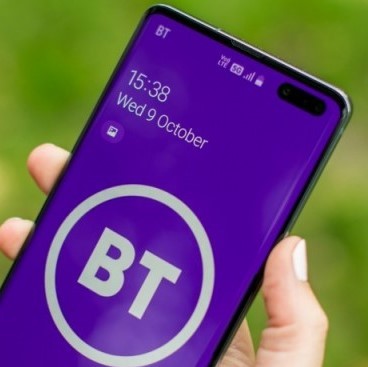The UK incumbent is setting up a discrete unit that will be charged with making it look more fit for purpose in a hi-tech world.

Eons after the process started, BT has still not emerged from the chrysalis of "digital transformation" as a prettier telecom specimen. CEO Philip Jansen must have been horrified when he took charge of the UK telecom incumbent two years ago to encounter its ugly mishmash of outdated systems.
Venting his frustration to analysts last year, Jansen complained that BT was held back by extensive reliance on legacy networks. Some 14 million customers were using the PSTN 16 years after the launch of 21CN, an all-Internet Protocol network that was supposed to replace it. Only one BT service – TV sports – was fully automated. Moving a customer from a part-copper broadband service to a full-fiber one took 16 days.
Figure 1: 
Determined to speed up the metamorphosis, Jansen is now setting up a discrete "digital" unit. Starting April 1, it will be tasked with turning the bumbling telecom dinosaur into a technology sophisticate that would not look out of place at a house party of Silicon Valley-based nerds, if such gatherings were acceptable in the age of coronavirus. Artificial intelligence, machine learning, cyber-security, the cloud and various other buzzwords are all on the agenda.
Digital, not analog
Pity the unit has been named BT Digital, adopting a word that has been widely abused as a vague catch-all for anything suggestive of Internet technology. Contrast that decision with Orange's move this week to abandon digital when launching Orange Ventures, a new investment fund that succeeds Orange Digital Ventures. The French operator probably realized digital as a descriptor has become as redundant as the fax machine.
BT Digital takes responsibility for AI, machine learning, the cloud etc. etc. (although not cyber-security) away from Howard Watson, who already had his hands full with the rollout of 5G and fiber networks, not to mention the banishment of Huawei, a Chinese equipment vendor that supplied much of the UK's telecom infrastructure before the government last year decided its Chinese heritage made it too big a security risk. Formerly BT's chief technology and information officer, Watson will lose the information part of his job title, even though he will continue to look after cyber- and information security.
The new unit will fall under the supervision of new recruit Harmeen Mehta, who joins BT from India's Bharti Airtel, where she was employed as chief information officer. BT is dropping information entirely, though. Mehta will be the company's chief digital and innovation officer, making her sound both whizzy and inventive.
With her appointment comes the departure of Mike Sherman, BT's chief strategy and transformation officer, who "has decided it's the right time for him to leave BT," said BT (but not Sherman). While his transformation responsibilities will fall to Mehta, corporate strategy will go to Simon Lowth, BT's chief financial officer.
Ugly business
Digital transformation is surely one of the sector's ugliest terms, partly because it is meaningless jargon but also as an occasional euphemism for job cuts. Overstaffing at BT became apparent in 2018, when Gavin Patterson, Jansen's predecessor, revealed plans to slash as many as 13,000 back-office and management jobs. Nor does a comparison with other European telcos flatter the UK service provider. In 2019, when it finished the year with 105,344 employees, BT made revenues of almost $295,000 per worker, less than any other incumbent in Western Europe.
The pace of job cuts picked up last year, when BT cut about 3,600 roles in the six months to September. The scrapping of legacy technologies, investment in automation and a lockdown-era preference for online shopping may have prompted some of those cuts. But recruitment activity this year risks wiping out the efficiency gains. In December, BT was reported to be on the lookout for another 5,000 engineers to build its higher-speed networks.
Want to know more about 5G? Check out our dedicated 5G content channel here on
Light Reading.
These staffing realities increase the likelihood that further cuts will be on Mehta's agenda. Jansen's goal is to realize annual gross savings of about £1 billion ($1.4 billion) by March 2023 and £2 billion ($2.7 billion) by March 2025. Adding another 5,000 engineers to the payroll may force him to swing a much bigger axe at other parts of the business. Selling property, ditching old networks and using more energy-efficient technologies are unlikely to make enough difference to operating costs, which ran to £19.6 billion ($26.7 billion) in BT's most recent fiscal year.
The operator's share price has risen from a low point of 98.38 pence sterling in September last year to more than 144 at the time of writing. But it has fallen from nearly 500 about five years ago, and sales have been under pressure. In October, when BT reported its first-half figures, revenues were down 8% and adjusted earnings around 5%. Whatever BT wants to call it, re-invention has become more important than ever.
Related posts:
— Iain Morris, International Editor, Light Reading
Read more about:
EuropeAbout the Author(s)
You May Also Like











